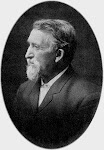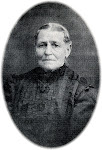Sunday
Saturday
Wednesday
102 High Street- place of residence listed on 1841 census- then and now
Tuesday
St.Tydfil- Old Parish Church (before and after restoration)

Mormon Immigration Index - Personal Accounts
Josiah Bradlee (February 1850)
Early Scenes in Church History
. . . While crossing the sea in 1850, emigrating to Utah, a number of remarkable cases of healing occurred under his administration. One was that of a young girl who was terribly afflicted with evil spirits, and who was entirely relieved when he placed his hands upon her head. Another was that of a little boy who fell through the hatchway of the vessel, alighting upon his head on the ring and bolt of the lower hatchway. When he was picked up it was found that the force of the fall had driven the iron upon which he struck into his head, and within a minute afterwards the injured place puffed up like a distended bladder. Of course, he was knocked insensible and apparently lifeless, but Brother Evans and one or two other [p.39] elders immediately administered to him, and while their hands were upon his head the swelling entirely disappeared and he was restored to consciousness and to health. This was witnessed and marveled at by a number of persons who were not in the Church as well as a great many of the Saints who were on board.
When Elder Evans was crossing the Atlantic in charge of a company of Saints emigrating to Utah, a terrible epidemic in the nature of a fever broke out on the ship, and threatened the destruction of all on board. He felt that their only hope lay in securing the favor of the Almighty, and determined to muster all the faith he could in appealing to the Lord. He called together four elders of experience who were on board, and asked them to retire with him to the hold of the vessel and unite in prayer. They did so again and again without any apparent good result, and Brother Evans marveled at the cause. It was such an unusual thing for him to fail to have his prayers answered, that he was surprised that it should be so in that instance, and he could only account for it by lack of union or worthiness on the part of the elders. He therefore called the four elders again to retire with him to the hold of the ship, and took with him a basin of clean water. When they had reached a secluded place where they were not likely to be overheard or disturbed by others, he talked to the elders about the necessity of their being united in faith and clear of sin before God if they desired to call upon him and receive a blessing. "Now," he said," I want each of you elders, who feels that his conscience is clear before God, who has committed no sin to debar him from the enjoyment of the Holy Spirit, and who has faith in the Lord Jesus Christ sufficient to call upon the Almighty in His name and claim the desired blessing, to wash his hands in that basin!" Three of the elders stepped forward and did so; the fourth could not - his conscience smote him. He was therefore asked kindly to retire, and the four others joined in earnest prayer before the Lord and rebuked the disease by which the people were afflicted. The result was that the epidemic ceased its ravages and the sick recovered from that very hour, much to the surprise of the ship's officers and others on board who knew nothing of the power by which such a happy result was accomplished, [p.40]
BIB: Early Scenes in Church History, Eighth Book of the Faith-Promoting Series, (Salt Lake City: Juvenile Instructor Office, 1882), pp. 39-40. (HDL)
Josiah Bradlee (February 1850)
A Compilation of General Voyage Notes
"The ship Josiah Bradlee, sailed from this port (Liverpool) for New Orleans, carrying 263 souls of the Latter-day Saints, under the presidency of Elder Thomas Day. Their ultimate destination is the Salt Lake Valley. This ship was detained in this port some eight or ten days by contrary winds. ..."
"FORTY-SEVENTH COMPANY. - Josiah Bradlee, 263 souls. The second company of Saints that left the shores of England bound for the Rocky Mountains in 1850, consisted of two hundred and sixty-three souls, who sailed from Liverpool, February 18th, under the presidency of Elder Thomas Day. After a fine and pleasant passage of eight weeks and four days, the company arrived in New Orleans on the eighteenth of April. ..."
"Mon. 18. [Feb. 1850] ~ The ship Josiah Bradley sailed from Liverpool, England, with 263 Saints under the direction of Thomas Day. It arrived at New Orleans April 18th."
ship - Josiah Bradlee (February 1850)
REES, William <1801>
Age: 49 Origin: Wales Occ: Boiler Maker
REES, Maria <1831>
Age: 19 Origin. Wales
REES, John <1835>
Age: 15 Origin: Wales Occ: Iron Roller
Sunday
Calling All Rees Men...
Participation in the project is given through three simple steps:
1) a signed consent form,
2) a pedigree chart and
3) a DNA sample obtained through a simple mouthwash swish.
Request a kit online today at www.smgf.org. You may also request additional kits for your friends and family members directly on their website or by contacting an SMGF representative at info@smgf.org.
Questions to be Answered
Mary Mason age 55,
Richard Mason age 30,
Nahomi Rees age 13,
John Rees age 10
and
Maria Rees age 6.
It appears that Maria's Mother was taking care of the orphaned children. Richard, Maria's brother is also listed. William does not appear at this address so he must have been away. The census only listed the persons who had spent the night at the address- it did not note permanent residents.
Saturday
Great Contrasts of Living Conditions

The Cyfartha Castle, a prominent fixture of Merthyr Tydfil, is a reminder of the great wealth and incredible suffering that was prevalent during the iron age period of history.
It was built by the well known ironmaster, Richard Crawshay II, as his family home in 1824 and has been called the most impressive monument of the industrial iron age in South Wales.
The Crawshays gained the great wealth needed to build such an edifice on the backs of the iron and coal workers in the valleys. The discrepancy between the wealth of the "iron families" and the pitifully poor living conditions of the workers in their industries contributed to the Merthyr risings of 1831.
Conditions that led to Migration
Merthyr Tydfil - Influence and growth of iron industry
Merthyr was situated close to reserves of iron ore, coal, limestone and water, making it an ideal site for ironworks. Small-scale iron working and coal mining had been carried out at some places in South Wales since the Tudor period, but in the wake of the Industrial revolution the demand for iron led to the rapid expansion of Merthyr's iron operations. The Dowlais Ironworks was founded by what would become the Dowlais Iron Company in 1759, making it the first major works in the area. It was followed in 1765 by the Cyfarthfa Ironworks. As other works were established, along with associated iron ore and coal mining, Merthyr grew from a hamlet of some 700 inhabitants to an industrial city of 80,000 people.
The demand for iron was fuelled by the railways and by the Royal Navy, who needed cannons for their ships. In 1802, Admiral Lord Nelson visited Merthyr to witness cannon being made. Several railway companies established routes that linked Merthyr with coastal ports or other parts of Britain. They included the Brecon and Merthyr Railway, Vale of Neath Railway, Taff Vale Railway and Great Western Railway. They often shared routes to enable access to coal mines and ironworks through rugged country, which presented great enegineering challenges. In 1804, the world’s first railway locomotive - "The Iron Horse", developed by the Cornish engineer Richard Trevithick, pulled 10 tons of iron from Merthyr on the newly constructed tramway from Penydarren to Abercynon. This now resides in Swansea Museum.
During the first few decades of the 1800's, the ironworks at Dowlais and Cyfarthfa continued to expand and at their peak were the most productive ironworks in the world. 50,000 tons of rails left just one ironworks in 1844, to enable expansion of railways across Russia to Siberia. At its peak, the Dowlais Iron Company operated 18 blast furnaces and employed 7,300 people, and by 1857 had constructed the world's most powerful rolling mill. The companies were mainly owned by two dynasties, the Guest and Crawshay families. One of the famous members of the Guest family was Lady Charlotte Guest who translated the Mabinogion into English from its original Welsh. The families also supported the establishment of schools for their workers.
Merthyr Tydfil - The Merthyr Riots
The riots of 1831 were probably precipitated by the ruthless collection of debts, which caused great poverty and hardship amongst workers affected by lower wages when the iron trade was depressed.
There is still controversy over what actually happened and who was to blame. It was probably more of an armed rebellion than an isolated riot. The initiators of the unrest were most probably the skilled workers; men who were much prized by the owners and often on friendly social terms with them. They also valued their loyalty to the owners and looked aghast at the idea of forming trade unions to demand higher wages. But events overtook them, and the community was tipped into rebellion.
The owners took fright at the challenge to their authority, and called on the military for assistance. Soldiers were sent from the garrison at Brecon. They clashed with the rioters, and several on both sides were killed. Despite the hope that they could negotiate with the owners, the skilled workers lost control of the movement.
Some 7,000 to 10,000 workers marched under a red flag, which was later adopted internationally as the symbol of the working classes. For four days, they effectively controlled Merthyr.
Even with their numbers and captured weapons, they were unable to effectively oppose disciplined soldiers for very long, and several of the supposed leaders of the riots were arrested. Some were transported as convicts to the penal colonies of Australia. One of them, Richard Lewis, popularly known as Dick Penderyn, was hanged, creating the first local working-class martyr. Alexander Cordell's novel The Fire People is set in this period. A serious political history of these events, The Merthyr Rising was written by the Merthyr-born marxist and writer Professor Gwyn 'Alf' Williams in 1978.
The first trade unions, which were illegal and savagely suppressed, were formed shortly after the riots. The rising also helped create the momentum that led to the Reform Act. The Chartism movement, which did not consider these reforms extensive enough, was subsequently active in Merthyr.
Many families had had enough of the strife, and they left Wales to utilise their skills elsewhere. Numerous people set out by ship to America, where the steelworks of Pittsburgh were booming. It only cost about five pounds to travel steerage.






